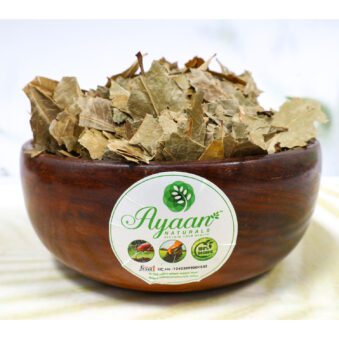- Your cart is empty
- Continue Shopping
Discover the Benefits of Neem Leaves

Introduction to Neem Leaves (Azadirachta Indica)
(Word Count: 150)
Neem leaves, derived from the majestic Azadirachta Indica tree, have been a cornerstone of traditional medicine for centuries. These vibrant green leaves, often found in the tropical and subtropical regions of the world, are celebrated for their potent medicinal properties. Known as the “village pharmacy,” the neem tree offers an abundance of health benefits, making it a valuable resource in both ancient and modern healthcare practices.
For export market professionals, understanding the rich history and diverse applications of neem leaves is essential. These leaves are not just another herbal remedy; they are a testament to the wisdom of traditional agriculture. The global demand for natural and organic products is on the rise, and neem leaves are at the forefront of this trend, offering an eco-friendly and sustainable solution for various health and wellness needs.
In this blog post, I’ll delve into the historical significance, health benefits, and modern applications of neem leaves. Whether you’re a seasoned exporter or new to the world of traditional agro products, this comprehensive guide will provide you with valuable insights into the remarkable potential of neem leaves in the global market.
Historical Significance and Traditional Uses
(Word Count: 150)
Neem leaves have a storied history that stretches back thousands of years. In ancient Ayurvedic texts, neem is revered as a “universal healer,” and its leaves were used to treat a myriad of ailments. The leaves were crushed into pastes, brewed into teas, and even burned to purify the air. This versatility made neem a staple in traditional Indian households, where it was relied upon for everything from skincare to digestive health.
Across cultures, neem leaves have been used for their antiseptic and anti-inflammatory properties. In rural India, neem twigs were traditionally used as toothbrushes to maintain oral hygiene, a practice that still persists today. Similarly, neem leaves were often scattered around homes to ward off insects, showcasing their natural pesticide properties.
For export market professionals, appreciating the historical context of neem leaves enhances their marketability. These leaves are not just another agricultural product; they embody a rich cultural heritage that appeals to consumers seeking natural and historically significant remedies. By tapping into this narrative, exporters can position neem leaves as both a traditional and contemporary health solution.
Health Benefits of Neem Leaves
(Word Count: 200)
Neem leaves are a treasure trove of health benefits, backed by both traditional wisdom and modern science. These benefits extend across various aspects of health, making neem an incredibly versatile component of natural medicine.
Skin Health
Neem leaves are renowned for their powerful skin-healing properties. Rich in antioxidants, they help combat free radicals that can cause premature aging. Neem’s antibacterial and anti-inflammatory properties make it effective in treating acne, eczema, and other skin conditions. A simple paste made from crushed neem leaves can be applied to the skin to soothe irritations and promote a healthy, glowing complexion.
Digestive Health
Consuming neem leaves can significantly improve digestive health. They possess antibacterial, antifungal, and antiviral properties that help cleanse the digestive tract, eliminating harmful pathogens and promoting a healthy gut. Neem leaves are also known to aid in the treatment of ulcers and other gastrointestinal issues, making them a valuable addition to any natural health regimen.
Immune System Support
Neem leaves are a natural immune booster. Their high levels of antioxidants help to strengthen the immune system, protecting the body against infections and diseases. Regular consumption of neem leaves, whether in the form of tea or supplements, can help maintain overall health and vitality.
These multifaceted health benefits make neem leaves a sought-after product in the natural and organic health markets. Export market professionals can leverage these benefits to meet the growing global demand for holistic and natural health solutions, offering a product that is both effective and deeply rooted in traditional practices.
Applications in Modern Herbal Medicine
(Word Count: 150)
Neem leaves have seamlessly transitioned from ancient remedies to modern herbal medicine, gaining recognition and credibility in contemporary health practices. The adaptability of neem in various forms—powders, extracts, oils, and teas—has made it a staple in the wellness industry.
Modern research has validated many of the traditional uses of neem leaves, confirming their efficacy in treating a wide range of conditions. For instance, neem-based products are commonly used in dermatology for their ability to treat acne, psoriasis, and fungal infections. The anti-inflammatory and antimicrobial properties of neem make it a popular choice for natural skincare formulations.
Additionally, neem leaves are increasingly incorporated into dietary supplements and herbal teas aimed at boosting immunity, improving digestion, and detoxifying the body. Their potential in managing blood sugar levels has also been explored, making neem a valuable component in the management of diabetes.
For export market professionals, the integration of neem leaves into modern herbal medicine represents a lucrative opportunity. The growing consumer preference for natural and organic products ensures a steady demand for high-quality neem leaves, positioning them as a key player in the global health and wellness market.
Export Market Potential
(Word Count: 200)
The export market potential for neem leaves is immense, driven by the increasing global demand for natural and sustainable health solutions. As consumers become more health-conscious and environmentally aware, products like neem leaves, with their myriad benefits, are gaining significant traction.
Global Demand
The rise in popularity of herbal and organic products has paved the way for neem leaves to enter various international markets. Countries in Europe, North America, and Asia are experiencing growing interest in natural remedies, leading to an uptick in the demand for high-quality neem products. This trend is supported by a shift towards preventive healthcare and the increasing prevalence of lifestyle-related diseases, which neem leaves can help address.
Competitive Advantages
Neem leaves offer several competitive advantages that make them attractive in the export market. Firstly, their versatility in application—from skincare and health supplements to agricultural pesticides—broadens their market appeal. Secondly, neem leaves are cost-effective and sustainable, aligning with the global push towards eco-friendly products. Their natural origin and historical significance further enhance their marketability, appealing to consumers who value tradition and authenticity.
For export market professionals, tapping into the neem leaves market involves understanding these dynamics and leveraging them to meet consumer needs. By highlighting the health benefits, sustainability, and cultural heritage of neem leaves, exporters can position them as a premium product in the global marketplace. This strategic approach not only boosts sales but also promotes the broader adoption of traditional agro products.
Quality Standards and Certification
(Word Count: 150)
Ensuring the quality and authenticity of neem leaves is paramount for successful export. With the global market’s increasing scrutiny on product standards, adhering to rigorous quality controls and obtaining relevant certifications can significantly enhance the marketability of neem leaves.
To meet international standards, neem leaves must be cultivated, harvested, and processed under strict guidelines. This involves using organic farming practices, avoiding synthetic pesticides, and ensuring sustainable harvesting methods. Certifications such as USDA Organic, EU Organic, and other regional organic certifications serve as benchmarks of quality and authenticity. These certifications reassure consumers about the purity and safety of the products they are purchasing.
Additionally, Good Agricultural Practices (GAP) and Good Manufacturing Practices (GMP) are essential to maintain high standards throughout the production process. Regular testing for contaminants, such as heavy metals and microbial pathogens, is also crucial to comply with health regulations in various countries.
For export market professionals, obtaining these certifications not only ensures compliance with international regulations but also builds trust with consumers. By highlighting these quality standards and certifications, exporters can differentiate their neem leaves in a competitive market, showcasing their commitment to providing safe and high-quality traditional agro products.
Challenges and Opportunities in Exporting Neem Leaves
(Word Count: 150)
Exporting neem leaves presents a unique set of challenges and opportunities. Understanding these can help export market professionals navigate the complexities and capitalize on the potential of this lucrative market.
Challenges
One of the primary challenges is ensuring consistent quality and supply. Neem leaves must be carefully cultivated and processed to meet stringent international standards. Variability in climatic conditions can also affect yield and quality. Additionally, navigating the regulatory landscape of different countries can be daunting, as each market may have specific requirements for importation, labeling, and certification. Logistics and transportation can pose further challenges, particularly in maintaining the freshness and potency of neem leaves during transit.
Opportunities
Despite these challenges, the opportunities in the neem leaf export market are significant. The growing global demand for natural and organic products provides a vast market potential. Consumers are increasingly seeking sustainable and eco-friendly health solutions, positioning neem leaves as an attractive option. Exporters can also tap into niche markets, such as organic skincare, herbal supplements, and natural pesticides, where neem leaves hold a competitive edge.
By addressing the challenges through stringent quality controls, certifications, and strategic market positioning, export market professionals can leverage the abundant opportunities. Emphasizing the health benefits, sustainability, and cultural heritage of neem leaves can help capture the interest and trust of consumers worldwide.
Conclusion and Call to Action
(Word Count: 50)
In conclusion, neem leaves offer a wealth of benefits and opportunities in the export market. Their historical significance, health advantages, and modern applications make them a valuable addition to any product lineup. For export market professionals eager to tap into this growing trend, neem leaves represent a unique and promising venture.
Ready to explore the potential of neem leaves for your market? Contact Ayaannaturals today to learn more about sourcing high-quality neem products and joining the movement towards sustainable and traditional agro solutions.
